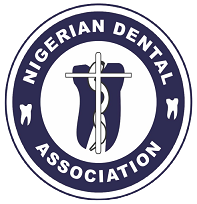Comparative Evaluation of Diagnodent and Digital Radiography in Dental Caries Diagnosis at the National Hospital Abuja: a Diagnostic Accuracy Study
DOI:
https://doi.org/10.61172/1fy44r59Keywords:
Keywords: Diagnodent, Radiography, Dental Caries, DiagnosisAbstract
Objective
Early caries detection is crucial for preventing and controlling the spread of dental caries. Conventional detection techniques (visual and radiographic) rely on subjective judgment and are prone to misinterpretation, which may lead to mismanagement. This highlights the need for objective and quantitative methods to detect and monitor the progression of carious lesions. Among several e m e r g i n g d i a g n o s t i c d e v i c e s , l a s e r fluorescence—particularly Diagnodent—has generated considerable interest. This study aimed to compare the performance of Diagnodent and digital bitewing radiography in detecting early dental caries, using Ekstrand's criteria and manufacturer-recommended Diagnodent thresholds.
Study Design
This diagnostic accuracy study was conducted at the Restorative Dentistry Unit of the National Hospital, Abuja, from 8 August to 9 November 2022. Ethical approval was obtained from the Health Research Ethics Committee (HREC) of the National Hospital, Abuja (Approval No. NHA/EC/078/2019).
Participants
Thirty-one participants with 130 premolar and molar teeth that met the inclusion criteria were randomly selected.
Test Methods
Teeth with incipient, non-cavitated enamel caries were examined using Diagnodent, digital bitewing radiographs, and visual examination (considered the gold standard). Visual and radiographic assessments followed Ekstrand's criteria, while Diagnodent results were interpreted using the manufacturer's cut-off values. Sensitivity, specificity, predictive values, overall accuracy, and Kappa scores (intra- and inter-examiner agreement) were calculated. Data were analyzed using IBM SPSS Version 26.0. The significance level was set at P< 0.05.
Outcomes
For occlusal surfaces, the sensitivity of early caries detection was 95.6%, 80.0%, and 100% for visual examination, Diagnodent, and bitewing radiography, respectively. The corresponding specificity values were 90.2%, 95.4%, and 27.3%. On interproximal surfaces, all methods recorded 100% sensitivity, but bitewing radiography had the lowest specificity (70.9%). Differences in specificity among diagnostic methods were statistically significant (P < 0.05) for both occlusal and interproximal surfaces, while sensitivity differences were not. Overall diagnostic accuracy was statistically significant for all three methods on both surfaces. Kappa scores for intra- and inter-examiner agreement were 0.9 for each diagnostic method. Diagnodent was more accurate than bitewing radiography for detecting early carious lesions on both occlusal and interproximal surfaces. Although Diagnodent demonstrated high accuracy, it is recommended as an adjunct to visual and radiographic methods rather than a standalone tool.
Downloads
References
1. Mohanraj M, Prabhu VR, Senthil R. Diagnostic methods for early detection of dental caries. Areview. Int J Pedod Rehabil 2016; 1:29–36.2.
2. Yon MJY, Gao SS, Chen KJ, Duangthip D, Lo ECM, Chu CH. Medical Model in Caries Management. Dent J (Basel) 2019; 7(2):37.3.
3. Yılmaz H, Keleş S. Recent Methods for Diagnosis of Dental Caries in Dentistry. Meandros Med Dent J 2018; 9:1–8.4.
4. Srilatha A, Doshi D, Kulkarni S, Reddy MP, Bharathi V. Advanced diagnostic aids in dental caries – Areview. J Glob Oral Health 2020; 2:118–27.5.
5. Shi XQ, Welander U, Angmar-Månsson B. Occlusal caries detection with Kavo Diagnodent and radiography: An in vitro comparison. Caries Res 2000; 34:15–18.6.
6. Akarsu S, Aktug S. In vitro comparison of ICDAS and diagnodent pen in the diagnosis and treatment decisions of non-cavitated occlusal caries. Odovtos Int J Dent Sc 2019; 21:67–81.7.
7. Bahrololoomi Z, Ezoddini F, Halvani N. Comparison of Radiography, Laser Fluorescence and visual examination for diagnosing incipient occlusal caries of permanent molars. J Dent (Tehran) 2015; 12:324–32.8.
8. Lussi A, Hibst R, Paulus R. Diagnodent: an optical method for caries detection. J Dent Res 2004; 83:80–3.9.
9. Nokhbatolfoghahaie H, Alikhasi M, Chiniforush N, Khoei F, Safavi N, Yaghoub Zadeh B. Evaluation of Accuracy of Diagnodent in Diagnosis of Primary and Secondary Caries in Comparison to Conventional Methods. J Lasers Med Sci 2013; 4:159–67.10.
10. Çağdaş Ç, Didem A, Mesut E, Ayşegül O. Comparison of laser fluorescence devices for detection of caries in primary teeth. Int Dent J 2013; 63:97–102.11.
11. Ekstrand KR, Ricketts DNJ, Kidd EAM, Qvist V, Schou S. Detection, diagnosing, monitoring and logical treatment of occlusal caries in relation to lesion activity and severity: An in vivo examination with histological validation. Caries Res 1998; 32:247–54.12.
12. Sichani AV, Javadinejad S, Ghafari R. Diagnostic value of Diagnodent in detecting caries under composite restorations of primary molars. Dent Res J 2016; 13:327–32.13.
13. Arif H, Meshiel A, Hussain I, Musa M, Almutheibi S. Brief review on sensitivity, specificity and predictives. J Dent Med Sci 2015; 14:64–68.14.
14. Haak R, Wicht MJ, Noack MJ. Conventional, digital and contrast-enhanced bitewing radiographs in the decision to restore approximal carious lesions. Caries Res 2001; 35:19–39.15.
15. Alammar R, Sadaf D. Accurate Detection of NonCavitated Proximal Caries in Posterior Permanent Teeth: An in vivo Study. Risk Manag Healthc Policy 2020; 13:1431–36.16.
16. Haak R, Wicht MJ, Noack MJ. Conventional, digital and contrast-enhanced bitewing radiographs in the decision to restore approximal carious lesions. Caries Res 2001; 35:19–39.17.
17. Mialhe FL, Pereira AC, Meneghim MD, Ambrosano GM, Pardi V. The relative diagnostic yields of clinical, FOTI and radiographic examination for the detection of approximal caries in youngsters. Indian J Dent Res 2009; 20:136–40.18.
18. Gomez J. Detection and diagnosis of early carious lesions. BMC Oral Health 2015; 15:1–3. doi:10.1186/1472-6831-15-S1-S
Downloads
Published
Issue
Section
License
Copyright (c) 2025 Ololade Abosede Akinyemi, Nicolagloria Okeoghenemaro Agboghoroma, Oluwole Oyekunle Dosumu

This work is licensed under a Creative Commons Attribution 4.0 International License.
Open Access Statement
- We became fully Open Access since January 2023.
- Our new and archived materials are available free of charge on open basis and under a Creative Commons license as stated below.
Copyright statement
Copyright © 1999 The authors. This work, Nigerian Dental Journal by Nigerian Dental Association is licensed under Creative Commons Attribution 4.0 International License.

